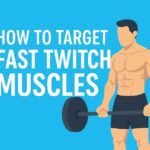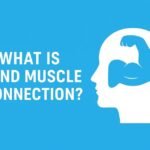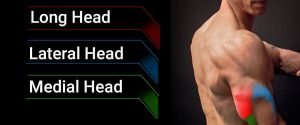How to Get More Veiny: Unlock the Road-Map Physique (Safely and Sustainably)
If you’re chasing that road-map look — veins snaking across your forearms, biceps, delts, and quads — you’re really asking how to get more veiny without wrecking your health or performance. Genetics set your baseline, sure, but the biggest levers you can control are body fat, muscle size, blood flow, hydration, electrolytes, and smart “pump” tactics. Master those, and you’ll look sharper in the gym and on camera, whether you’re prepping for a photoshoot, the beach, or just your own mirror test.
Below is your end-to-end playbook: the physiology, the daily habits, specific workouts, peak-day tricks, and guardrails so you don’t slide into risky dehydration or crash dieting. Let’s build veins that pop — and a body that performs.
Vascularity 101: What Makes Veins Show?
Visible veins (vascularity) are mostly a function of three things:
- Less Subcutaneous Fat: A thinner “fat blanket” over the muscle lets veins show through.
- More Muscle: Bigger muscle bellies push veins closer to the skin’s surface.
- More Blood in the Pipes: Vasodilation (vessels opening) and higher plasma volume make veins fuller and more pronounced.
Other variables layer on top — skin thickness/elasticity, temperature (heat = more vasodilation), hydration status, sodium/potassium balance, and acute “pump” techniques. Because these factors are dynamic, vascularity changes across the day: you’ll look most veiny when warm, pumped, and well-hydrated with carbs on board.

The Big Picture Strategy
Think of vascularity as a four-phase project you repeat in cycles:
- Recomposition (Leaner + Stronger): Drop body fat slowly while gaining or maintaining muscle.
- Pump Optimization: Train in ways that increase localized blood flow and metabolites (high reps & short rests).
- Hydration & Electrolyte Mastery: Keep blood volume high and muscles full — consistently.
- Occasional Appearance Peaking: For specific days, manipulate carbs, sodium, heat, and pump work to bring the veins out (without unsafe dehydration).
We’ll go deep on each.
Phase 1 — Get Lean (Without Losing Muscle)
Establish a Calorie Target and Lose Fat Slowly
- Deficit Size: Aim for ~300–500 kcal/day below maintenance. That’s enough to trend down ~0.5–1.0% body weight per week without torching muscle or tanking training.
- Protein: 1.6–2.2 g/kg body weight daily. Protein preserves muscle and aids satiety.
- Carbs & Fats: Split the rest by preference and training demands. Many lifters do well with higher carbs on training days (for pumps and performance) and slightly lower carbs on rest days.
Reality Check Thresholds (Approximate, Varies by Genetics)
- Men usually see strong arm/shoulder vascularity around 10–12% body fat; “freaky” vascularity < 8%.
- Women often notice more deltoid/forearm vascularity < 18%; extreme vascularity below mid-teens typically requires serious discipline and is not necessary for health.
Track What Matters
- Weekly average scale weight (look for the trend, not daily noise).
- Circumference (waist, upper arm, thigh).
- Progress pics in consistent light and poses.
- Training logs (if performance is collapsing, your deficit is likely too aggressive).
Phase 2 — Build the Pipes (Muscle + Capillaries)
Lift Heavy and Chase the Pump
You need both progressive overload and metabolic stress:
- Foundation (Strength + Size): 2–4 sets of 5–8 reps on compounds (squat, bench, deadlift, press, row, pull-up). Rest 2–3 minutes.
- Pump Work (Vascular Stimulus): 3–5 sets of 12–20 reps with 60–75 seconds rest on isolation and machine movements. Keep constant tension; avoid locking out and “dead stops.”
Advanced Blood-Flow Techniques
- Supersets: Pair antagonist muscles (e.g., biceps/triceps) or same-muscle angles for swelling and metabolite build-up.
- Drop Sets: Hit failure, strip 20–30%, keep going; repeat 1–2 drops.
- Partials After Failure: When full ROM dies, squeeze out 5–10 partial reps.
- BFR (Blood Flow Restriction): For arms/legs only, use a validated cuff or elastic wrap near the limb’s top. Load 20–30% 1RM, perform 30-15-15-15 reps with 30 seconds rest. Limit to 1–2 movements and remove cuffs between exercises.
Safety Tip: BFR should feel snug but not painful or numb. Ditch it if you feel tingling, discoloration, or sharp pain.
Targeted “Vein Zones”
- Forearms & Biceps (Cephalic Vein): Hammer curls, reverse curls, wrist curls/extensions, rope hammer curls, incline DB curls.
- Triceps: Pushdowns (different handles), overhead extensions, dips (controlled).
- Delts: High-rep lateral raises with slow eccentrics, cable Ys.
- Quads/Calves: Leg extensions with 2–3-sec squeezes, sled pushes, standing + seated calf raises in higher rep brackets.
Phase 3 — Hydration, Electrolytes, and Carbs (Your Daily Pump Engine)
Hydration Targets (Baseline)
- Aim for 30–40 ml/kg body weight water per day (e.g., a 75-kg lifter: ~2.3–3.0 L water). In hot climates or high-volume training, you may need more.
- Pre-training: 400–600 ml water 1–2 hours before; 200–300 ml 15–20 minutes pre-lift.
- Intra-training: Sip 150–250 ml of water every 10–15 minutes.
Electrolyte Balance (Don’t Fear Sodium)
Sodium keeps plasma volume up and helps you hold a fuller pump. If you’re otherwise healthy and sweating a lot:
- Add salt to meals (or use a light electrolyte mix) and include potassium sources (potatoes, bananas, citrus, coconut water).
- Many lifters do well with ~1–3 g sodium/day baseline and +0.5–1.0 g on heavy sweat days. (Individualize if you have blood pressure or medical considerations — talk to your clinician.)
Carbohydrates: Glycogen = Vein-Pushing Volume
Carbs pull water into muscle (glycogen storage), pressing veins outward:
- Pre-lift (60–120 min): 1–2 g/kg carbs across the day, with 25–60 g in the pre-training window for pump days.
- Post-lift: Another 25–60 g carbs with protein to refuel.
- Nitrates in Food: Beetroot, arugula, spinach, lettuce — these support nitric oxide (NO) production.
Phase 4 — Supplements That Actually Help (and How to Use Them)
Supplements won’t compensate for poor sleep, sloppy nutrition, or inconsistent training. But used well, they nudge pumps and vascular appearance.
- L-Citrulline (or Citrulline Malate): 6–8 g ~30–60 min pre-workout supports NO production and vasodilation.
- Creatine Monohydrate: 3–5 g daily, any time. Increases muscle phosphocreatine and cell volume; can subtly enhance fullness.
- Glycerol Powder: 1–2 g/kg (dosed per product directions) with plenty of water, ~30–60 min pre-training for hyperhydration and crazy pumps. (Test tolerance first; it can cause GI upset.)
- Beetroot Extract/Juice: 400–600 mg nitrate equivalent pre-lift can aid NO.
- Betaine Anhydrous: 2.5 g/day may assist power output and pump quality.
- Omega-3s: 1–2 g EPA+DHA/day supports vascular/endothelial health.
- Vitamins C & K: Support vessel integrity; get them primarily from whole foods.
Caution: Skip aggressive diuretic use and “water shred” pills unless medically supervised. The cosmetic payoff is short-lived, and the risk (performance, health) is real.
Peak-Day (Photo/Beach) Protocol — A Safe Version
This is not contest-prep dehydration. It’s a short, practical sequence to look your best for a specific event without nuking your well-being.
48–24 Hours Out
- Train the target areas with high-rep, short-rest pump work (no crippling DOMS).
- Increase carbs modestly (think 1–2 carb-rich meals you tolerate well).
- Keep sodium normal to slightly higher so you store glycogen + water in the muscle.
- Hydrate well — don’t cut water.
Day of
- Breakfast: Normal protein + moderate carbs + a bit of salt.
- 2–3 hours pre-event: A carb + protein meal you digest easily (e.g., rice + lean meat + salty sauce).
- 60 min pre: 6–8 g citrulline (or your pre-workout with proper dosing).
- 30 min pre: Light pump circuit for the areas on display (see below).
- During: Small sips of water; don’t chug.
- Environment: Warm room or outside heat helps vasodilation. Avoid cold.
Quick Pump Circuit (12–15 min)
- Banded pushdowns x 25
- Banded curls x 25
- Lateral raises x 20 (slow negatives)
- Rope hammer curls x 20
- Pushups x 20
- Rest 30–45 sec between moves, repeat 2–3 rounds.
Sample Week (3-Day Full-Body With Pump Finishers)
Great for recomposition and vascular emphasis.
Day 1 — Full Body + Arms Pump
- Back Squat 4×6–8 (2–3 min)
- Bench Press 4×6–8 (2–3 min)
- Chest-Supported Row 3×8–10 (2 min)
- Incline DB Curl 3×12–15 (75 sec)
- Overhead Rope Extension 3×12–15 (75 sec)
- Finisher: EZ-Bar Curl Drop Set 12→8→AMRAP, then cable pushdowns Drop Set 15→10→AMRAP
Day 2 — Conditioning + Delts/Calves
- 20–30 min LISS (incline walk, moderate pace)
- Seated DB Shoulder Press 3×8–10
- Cable Lateral Raise 4×15–20 (60–75 sec)
- Rear Delt Fly 3×15–20
- Standing Calf Raise 4×12–15 + 10 partials each set
Day 3 — Full Body + BFR Quads/Arms
- Deadlift or RDL 4×6–8
- Pull-Ups or Lat Pulldown 4×6–10
- DB Bulgarian Split Squat 3×10–12/leg
- BFR Leg Extension 30-15-15-15 (30 sec rests)
- BFR Cable Curl 30-15-15-15
- Face pulls 3×15
Add an optional arm pump micro-session (10–12 min) on 1–2 off days: cable curls + pushdowns 3×20 each, 45-sec rests, then 1 burnout set each to near failure.
Nutrition Playbook (Examples)
A Simple Cutting Day (75-kg Lifter Example)
- Calories: ~2,200–2,400 (adjust by progress)
- Protein: ~150–170 g
- Carbs: ~200–240 g (higher on training days)
- Fats: balance of calories (~60–70 g)
Meals (Sample)
- Breakfast: Greek yogurt, berries, oats, honey, pinch of salt
- Lunch: Chicken, jasmine rice, mixed greens, olive oil + salt
- Pre-lift Snack (60–90 min): Banana + whey in water + small handful of pretzels
- Post-lift: Turkey wrap with tortilla, lettuce, mustard, fruit
- Dinner: Salmon, potatoes, asparagus, butter + lemon, salt/pepper
Electrolytes: Add salt in food according to taste, add potassium-rich food, consider ~500–700 ml light electrolyte drink during long/hot sessions.
Special Populations & Variables
Women
- Veins typically show later (more subcutaneous fat, hormonal profiles).
- Emphasize performance and sustainability, not chasing extremely low body fat.
- Iron status matters for training quality; discuss labs with your clinician if you’re chronically fatigued.
40+ Lifters
- Prioritize joint-friendly exercises (machines, cables), but keep intensity.
- Quality sleep and stress management pay outsized dividends for pumps and recovery.
Medications & Health Conditions
- Beta-blockers, certain antidepressants, and other medications can alter heart rate and vasodilation.
- Hypertension, kidney, or cardiac issues warrant a medical consult before manipulating sodium, hydration, or using stimulant pre-workouts.
Not Veiny Yet? Do This.
- You’re not lean enough (yet). Hold your course; adjust calories by –150 to –200/day and reassess in 2 weeks.
- You’re under-hydrating. Track intake for 3–5 days; most lifters drink less than they think.
- Your pump work is timid. Increase density: shorter rests (60–75 sec), 15–20 rep sets, more constant tension.
- Electrolytes are low. Add salt to 2–3 meals, include potassium foods, and consider a simple electrolyte mix intra-workout.
- Flat from too much cardio. Swap some LISS for sled pushes, incline walking with a pack, or keep LISS but reduce total duration and add a pump finisher.
- Stress and sleep are tanking you. 7–9 hours/night, wind-down routine, keep caffeine earlier in the day.
Quick reminder in case you’re still searching how to get more veiny: the hierarchy is fat loss → muscle mass → blood flow → hydration/electrolytes → smart peaking. Hit them in that order.
Myths to Ignore
- “Just dehydrate and you’ll look shredded.” You’ll look flat, crampy, and your performance will crater.
- “Cardio kills gains and vascularity.” Excessive cardio can flatten you; appropriate cardio improves capillary density and health.
- “It’s all genetics.” Genetics influence vein placement and skin thickness — but your body fat, muscle, hydration, and training are the true levers.
If you skimmed down here hunting how to get more veiny, remember: get lean methodically, train for size and pumps, hydrate with smart electrolytes, and time carbs + a brief pump circuit for showtime.
A 10-Point Weekly Checklist
- Protein daily at 1.6–2.2 g/kg.
- Calories in a slight deficit (if fat loss is still needed).
- Three hard lifts/week with compounds + pump finishers.
- One to two cardio sessions (LISS or intervals) — don’t overdo.
- 6–8 g citrulline on key pump days.
- 3–5 g creatine every day.
- Hydration target met (30–40 ml/kg; more if hot).
- Add salt to meals according to taste and include potassium-rich foods.
- Eat nitrate-rich vegetables most days.
- 7–9 hours sleep and a wind-down routine.
Putting It All Together
Vascularity isn’t magic. It’s the cumulative effect of disciplined training, intelligent nutrition, consistent hydration/electrolyte habits, and a few targeted tactics around the moments that matter. You don’t need extreme dehydration or crash diets; you need repeatable systems.
Dial in body fat sensibly, layer in pump-friendly training, salt your food, eat carbs you digest well, and use citrulline/creatine/glycerol strategically. On show days, warm up, pump up, and let the lighting do the rest.
Final Word: How to Get More Veiny the Right Way
At the end of the day, how to get more veiny comes down to mastering what you can control: get lean at a sustainable pace, build serious muscle, train for both strength and pumps, hydrate with adequate sodium & potassium, and time carbs & quick pump work when you want to look your best. Repeat those fundamentals and your veins will take care of themselves — safely, predictably, and impressively.
Frequently Asked Questions
Q1) What’s the Fastest Way to Look More Veiny for a Photo Tomorrow?
Sleep well, hydrate today, eat moderate carbs + salt at breakfast and lunch tomorrow, take 6–8 g citrulline 45–60 min pre-shoot, then do a 10–15 min pump circuit in a warm space. Small sips of water; don’t overdrink.
Q2) Is Alcohol or Red Wine Helpful?
Some physique athletes use a few sips for temporary vasodilation. Downsides: dehydration, impaired performance, and it’s unpredictable. Food-first + pump-first is more reliable.
Q3) Should I Cut Water?
For most people, no. Strategic timing and carb/sodium handling are safer and more effective, but severe restriction risks, cramps, and poor appearance can occur.
Q4) Which Supplement Is Best for Pumps?
Citrulline is the most consistently helpful, followed by beetroot/nitrates and glycerol (if you tolerate it). Creatine supports fullness and training quality long-term.
Q5) How Often Can I Do BFR?
1–3 times per week per limb area, 1–2 exercises/session. Keep it supplemental, not the main event.






